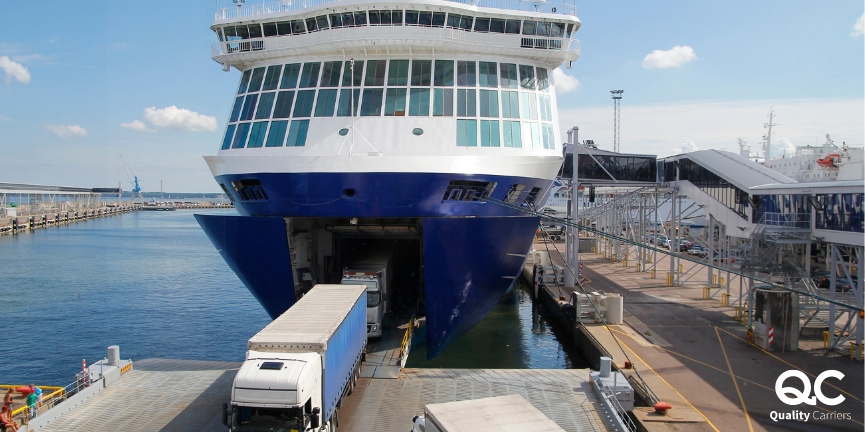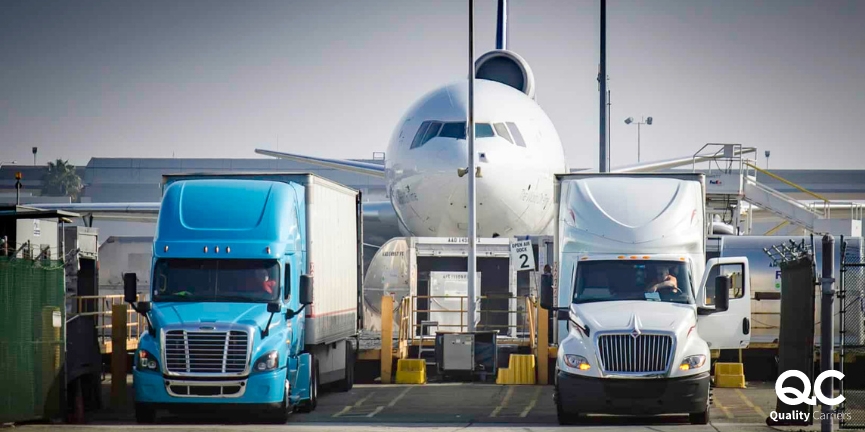Intermodal transportation involves moving goods using multiple modes of transport without directly handling the cargo during transfers. It is essential in global logistics and supply chain management. This efficient and cost-effective method leverages the strengths of different transportation modes to optimize the movement of goods from origin to destination.
Let’s explore some common examples of intermodal transportation and their benefits.
What is Intermodal Transportation?
Intermodal transportation refers to moving goods using two or more modes of transport within a single journey. This method utilizes standardized containers, seamlessly transferring between ships, trucks, trains, and other modes without cargo handling. By combining the efficiencies of various transportation modes, intermodal transport offers a more streamlined and cost-effective solution for shipping goods.
Common Examples of Intermodal Transportation
Railroads
Railroads are crucial in intermodal transportation, particularly for long-distance hauls. Goods are transported in containers or trailers by truck to a rail yard, where they are loaded onto trains. The trains then carry the cargo long distances before returning it to trucks for final delivery.
Ferry Services

Ferry services are essential for transporting goods across bodies of water, especially when direct road or rail connections are unavailable. Trucks carrying containers can drive onto ferries, transporting them across rivers, lakes, or seas. Upon reaching the other side, the trucks continue their journey to the destination.
Train Services
Train services are the backbone of intermodal transportation, especially in regions with extensive rail networks. Containers are loaded onto trains, transporting them to various intermodal terminals. From these terminals, the cargo is transferred to trucks or other modes of transport for further distribution.
Bus Services
Although less common for freight, bus services can be part of an intermodal system for passenger transport. Intermodal terminals often connect bus services with rail, ferry, and air transport, facilitating seamless travel for passengers and sometimes small parcels or express packages.
Airport Services

Airport services are integral to intermodal transport, particularly for high-value or time-sensitive goods. Cargo is transported by truck to airports and loaded onto planes. After the flight, the goods are picked up by trucks at the destination airport and delivered to their final destinations.
Shipping
Shipping is a critical component of intermodal transportation for international trade. Goods are transported in containers by ship across oceans. Upon arrival at the destination, the containers are unloaded and transferred to trucks for further transport.
Benefits of Intermodal Trucking
Intermodal transportation offers several key benefits:
- Cost Efficiency: Intermodal trucking can significantly reduce transportation costs by combining the cost-effectiveness of rail or ship for long distances with the flexibility of trucking for last-mile delivery.
- Environmental Benefits: Using rail and ship transport can reduce the effect of carbon emissions compared to relying solely on trucks, making intermodal transportation a more sustainable option.
- Flexibility: Intermodal transportation offers greater flexibility in routing and scheduling, allowing for better adaptation to changing demands and conditions.
- Security: Using standardized containers reduces the risk of cargo damage and theft, as goods are not handled during transfers between modes.
- Reliability and Security: Intermodal transport enhances the reliability and security of shipments. Containers remain sealed throughout the journey, minimizing the risk of damage or theft.
- Reduced Congestion: Intermodal transport can help reduce road congestion by shifting long-distance freight to rail or ship.
Impact of Intermodal Transport Systems in Logistics
Intermodal transport systems profoundly impact logistics by improving efficiency, reducing costs, and enhancing environmental sustainability. They enable better resource utilization, lower fuel consumption, and decreased greenhouse gas emissions. Additionally, intermodal systems facilitate international trade by providing seamless connections between different modes of transport, thus enhancing global supply chain networks.
Conclusion
Intermodal transportation is essential to modern logistics, providing a cost-effective, environmentally friendly, and reliable method for moving goods. By leveraging the strengths of various transportation modes, businesses can boost their supply chains and improve overall efficiency. Whether through railroads, ferry services, train services, buses, airports, or shipping, intermodal transport systems offer numerous benefits that enhance the movement of goods worldwide.
FAQs
Intermodal transportation improves supply chain efficiency by reducing transportation costs, optimizing route planning, minimizing delays through better scheduling, and providing more reliable and secure transport options.
Intermodal transportation uses multiple modes of transport with standardized containers, ensuring no cargo handling during mode transfers. Multimodal transportation also uses various modes but may involve handling the cargo during transfers.
Challenges include:
– Coordinating different modes of transport.
– Managing logistics across various jurisdictions.
– Handling potential delays or disruptions.
– Ensuring the security of cargo during transfers.




